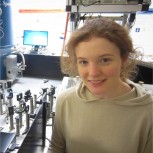
Professor of Electronic and Photonic Engineering
Academic Division: Electrical Engineering
Telephone: +44 1223 7 48379
Email: hjj28@cam.ac.uk
Research interests
Please have a look at my research group's website for full details.
Research projects
Hannah is in receipt of an ERC Starting Grant (ACrossWire 716471) and EPSRC grants (EP/V055003/1 and EP/S019324/1)
